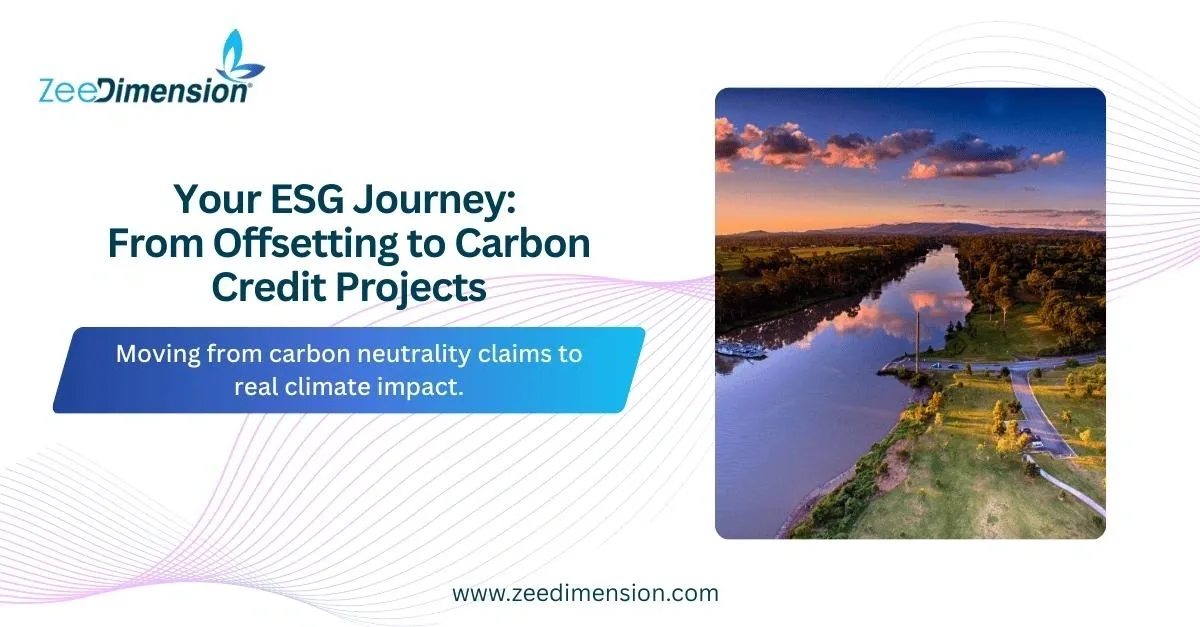
Moving from carbon neutrality claims to real climate impact.
Why This Matters
Offsetting is only the beginning.
Most ESG strategies start with carbon offsets—but that’s no longer enough.
Is your organization ready for the next step?
What Is Carbon Offsetting?
Carbon offsetting means funding projects that reduce emissions elsewhere to balance out your own. For example, you might support tree planting or clean energy efforts. It helps—but can feel distant and disconnected from your daily impact.
The Limits of Offsetting
Offsetting can help, but it’s not a complete solution. It often lacks local impact, is hard to verify, and can lead to greenwashing. The big question remains: can you really prove your emissions are gone?
ESG-Aligned Offsets
Next step: Make offsets part of your ESG vision
Smart organizations align offsets with:
– Local communities (S)
– Transparent partnerships (G)
– Nature-based solutions (E) Result: Impact beyond carbon.
Enter Carbon Credit Projects
From buyer… to builder.
Leading companies now develop their own carbon credit projects.
– Own the asset
– Generate verified credits
– Control your climate impact
Why It’s a Game-Changer
Owning carbon credits means owning your ESG narrative. It gives you strategic control, unlocks new revenue streams, ensures you’re ready for regulations, and builds lasting trust with stakeholders.
What You’ll Need
Making the leap requires more than ambition
– Climate project expertise
– Investment and infrastructure
– Measurement & verification systems
– Cross-sector partnerships Do you have the team and tools in place?
A Future-Proof ESG Strategy
From neutral to net positive
The next wave of ESG leadership builds—not buys—impact.
Carbon credit projects are no longer a luxury.
They’re a legacy.
Final CTA Slide
Is your organization ready to build real climate impact?
Let’s turn ESG from reporting into results.
CTA:
Follow for more insights on ESG innovation, carbon markets, and sustainability leadership.







